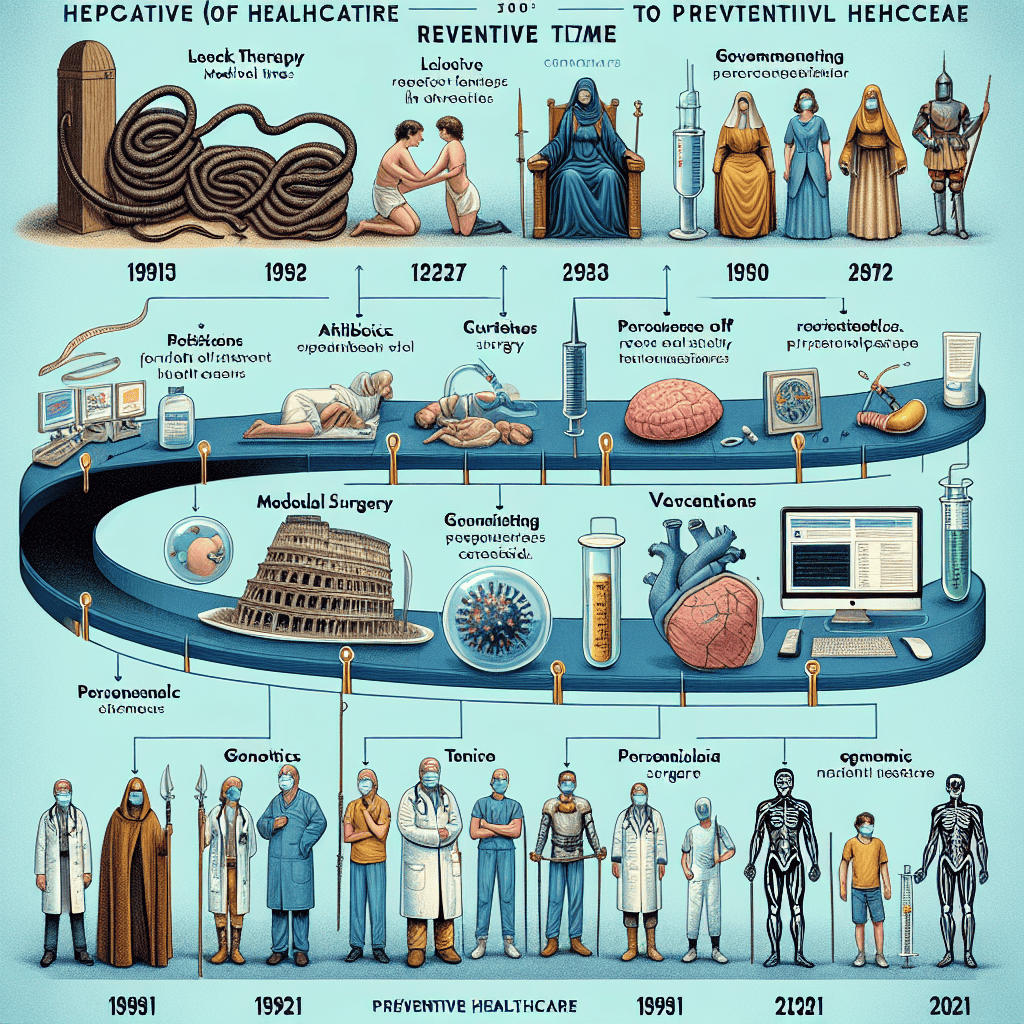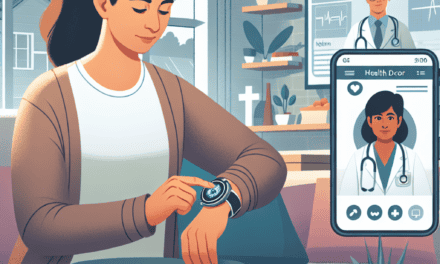-
Table of Contents
- The Evolution of Healthcare: From Reactive to Preventive Models
- The Reactive Healthcare Model: A Historical Perspective
- The Rise of Modern Medicine
- Limitations of the Reactive Model
- Case Study: The Burden of Chronic Diseases
- The Shift Towards Preventive Healthcare
- Understanding Preventive Healthcare
- The Role of Technology in Preventive Healthcare
- Case Study: The Impact of Vaccination Programs
- Challenges in Implementing Preventive Healthcare Models
- Barriers to Preventive Healthcare
- Policy and Regulatory Challenges
- Case Study: The Role of Health Insurance in Preventive Care
- The Future of Preventive Healthcare
The Evolution of Healthcare: From Reactive to Preventive Models

The healthcare industry has undergone significant transformations over the past few decades. Traditionally, healthcare systems have been predominantly reactive, focusing on treating illnesses and conditions after they occur. However, there has been a paradigm shift towards preventive healthcare, which emphasizes preventing diseases before they manifest. This article explores the evolution of healthcare from reactive to preventive models, highlighting key developments, challenges, and future directions.
The Reactive Healthcare Model: A Historical Perspective
For much of history, healthcare has been reactive in nature. This model is characterized by a focus on diagnosing and treating diseases and conditions after they have developed. The reactive approach has been the cornerstone of healthcare systems worldwide, driven by advancements in medical technology and pharmaceuticals.
The Rise of Modern Medicine
The reactive model gained prominence with the advent of modern medicine in the 19th and 20th centuries. The discovery of antibiotics, vaccines, and surgical techniques revolutionized the treatment of infectious diseases and acute conditions. Hospitals became centers of care, equipped with advanced diagnostic tools and specialized medical professionals.
During this period, healthcare systems were primarily designed to address acute illnesses and injuries. The focus was on curing diseases, often through hospitalization and medical interventions. This approach led to significant improvements in life expectancy and the reduction of mortality rates from infectious diseases.
Limitations of the Reactive Model
Despite its successes, the reactive healthcare model has several limitations. It often leads to high healthcare costs due to the emphasis on treatment rather than prevention. Chronic diseases, such as diabetes, heart disease, and cancer, have become more prevalent, placing a significant burden on healthcare systems.
Moreover, the reactive model tends to overlook the social determinants of health, such as lifestyle, environment, and socioeconomic factors. This narrow focus on medical interventions fails to address the root causes of many health issues, leading to recurring health problems and increased healthcare expenditures.
Case Study: The Burden of Chronic Diseases
Chronic diseases are a major challenge for reactive healthcare systems. According to the World Health Organization (WHO), chronic diseases account for 71% of all deaths globally. In the United States, chronic diseases are responsible for 90% of the nation’s $3.8 trillion in annual healthcare expenditures.
The reactive model struggles to manage chronic conditions effectively, as it often involves ongoing treatment and management rather than prevention. This has led to a growing recognition of the need for a shift towards preventive healthcare models.
The Shift Towards Preventive Healthcare
In response to the limitations of the reactive model, healthcare systems are increasingly adopting preventive approaches. Preventive healthcare focuses on reducing the risk of diseases and promoting overall health and well-being. This shift is driven by advancements in medical research, technology, and a growing understanding of the importance of lifestyle and environmental factors in health.
Understanding Preventive Healthcare
Preventive healthcare encompasses a range of strategies aimed at preventing diseases before they occur. These strategies include health education, lifestyle modifications, vaccinations, screenings, and early interventions. The goal is to reduce the incidence and impact of diseases, ultimately improving population health outcomes.
Preventive healthcare is often categorized into three levels:
- Primary Prevention: Aims to prevent diseases before they occur through measures such as vaccinations, healthy lifestyle promotion, and environmental modifications.
- Secondary Prevention: Focuses on early detection and intervention to halt the progression of diseases. This includes regular screenings and check-ups.
- Tertiary Prevention: Involves managing and mitigating the impact of established diseases to prevent complications and improve quality of life.
The Role of Technology in Preventive Healthcare
Technological advancements have played a crucial role in the shift towards preventive healthcare. Digital health tools, wearable devices, and telemedicine have empowered individuals to monitor their health and make informed decisions. These technologies enable early detection of health issues and facilitate timely interventions.
For example, wearable fitness trackers can monitor physical activity, heart rate, and sleep patterns, providing valuable insights into an individual’s health. Telemedicine platforms allow patients to access healthcare services remotely, increasing accessibility and convenience.
Case Study: The Impact of Vaccination Programs
Vaccination programs are a prime example of successful preventive healthcare initiatives. Vaccines have significantly reduced the incidence of infectious diseases such as measles, polio, and influenza. According to the Centers for Disease Control and Prevention (CDC), childhood vaccination programs in the United States have prevented over 21 million hospitalizations and 732,000 deaths among children born in the last two decades.
The success of vaccination programs highlights the potential of preventive healthcare to improve public health outcomes and reduce healthcare costs.
Challenges in Implementing Preventive Healthcare Models
While the shift towards preventive healthcare offers numerous benefits, it also presents several challenges. Implementing preventive models requires changes in healthcare infrastructure, policies, and cultural attitudes towards health and wellness.
Barriers to Preventive Healthcare
One of the primary barriers to preventive healthcare is the lack of awareness and education among the general population. Many individuals are unaware of the importance of preventive measures and may not prioritize them in their daily lives. This is compounded by cultural and socioeconomic factors that influence health behaviors.
Additionally, healthcare systems often face financial constraints that limit their ability to invest in preventive initiatives. The reactive model is deeply ingrained in many healthcare systems, and transitioning to a preventive approach requires significant resources and policy changes.
Policy and Regulatory Challenges
Policy and regulatory frameworks play a crucial role in shaping healthcare systems. Implementing preventive healthcare models requires supportive policies that incentivize preventive measures and allocate resources for public health initiatives.
However, policy changes can be slow and complex, often hindered by political and economic considerations. There is a need for collaboration between governments, healthcare providers, and stakeholders to create an enabling environment for preventive healthcare.
Case Study: The Role of Health Insurance in Preventive Care
Health insurance coverage is a critical factor in accessing preventive healthcare services. In countries with universal healthcare systems, preventive services are often covered, leading to higher utilization rates. In contrast, in countries with private insurance systems, coverage for preventive services may vary, affecting access and affordability.
For example, the Affordable Care Act (ACA) in the United States expanded coverage for preventive services, including screenings and vaccinations, without cost-sharing. This policy change has increased access to preventive care for millions of Americans.
The Future of Preventive Healthcare
The future of healthcare lies in the continued evolution towards preventive models. As technology advances and our understanding of health determinants deepens, preventive healthcare will play an increasingly important role in improving population health outcomes.





